Known for its various uses, there are many Different Types of Coconuts that you are not aware of! Here are some of the popular varieties you should know!
Coconuts are one of the most versatile food sources and are also considered as ‘Super Food’ thanks to the numerous health benefits they offer! Here are different Types of Coconuts you might not have heard about!
What is a Coconut?
Coconut is a one-seeded fruit of a tropical tree- Cocos Nucifera. It belongs to the Arecaceae family and grows in a humid and warm climate. This palm tree is native to Malasia and found in Southeast Asia, Indonesia, and some pacific islands.
The fruit consists of three layers: endocarp, exocarp, and mesocarp. Exocarp is the green and smooth, outermost layer. Mesocarp is the middle fleshy layer of the coconut; the endocarp is the hard and woody layer surrounding the seed.
To know whether it is a fruit or a nut, Click here!
Types of Coconuts
There are mainly two types of Coconuts trees–tall and dwarf. The tall grows up to 50-90 feet and starts bearing fruits after 7-10 years. Whereas, the dwarf grows up to 20-60 feet and begins fruiting after 4-5 years. Dwarf varieties have an average life span of 40-50 years, while tall varieties live up to 90-100 years. Also, the tall varieties are cross-pollinated, and dwarf ones are self-pollinated.
There are some hybrid varieties of coconuts as well, combining features of both. Tall x Dwarf (TxD), Dwarf x Tall (DxT) are two main hybrids.
Note: Dwarf coconut varieties are better than taller ones, as you can easily maintain them due to their small size.
Brown Vs. Green Coconuts
Both green coconuts and brown coconuts are the same, but the difference lies in their age. Green ones are young, not completely ripened, whereas brown husk coconuts are fully mature, containing less water comparatively. The flesh of Brown coconuts are used in cooking and can be eaten raw as well. Whereas, the green coconuts are mainly used for their flavorful water, used either for drinking or making binakol. The coconut oil extracted from the dried or brown coconuts is used for frying and cooking purposes.
Fun Fact: Coconuts also come in Orange color. The king coconut is orange due to the carotenoid compound.
Different Types of Coconuts
1. West Coast Tall Coconut
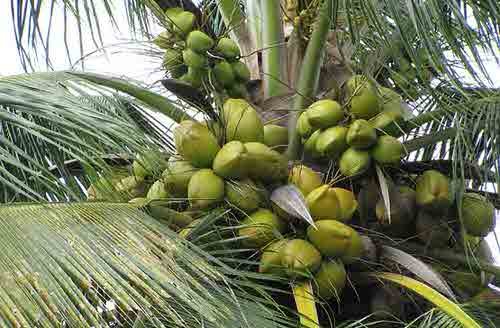
This tall coconut tree bears fruit in 6-7 years and produces around 60-80 coconuts per palm, each year. It is drought-tolerant, and the color of the fruits varies from green to yellow and orange to brown.
2. East Coast Tall Coconut
East coast tall produces around 60-70 coconuts on each palm every year and takes 6-8 years to yield fruits. This tall coconut tree needs well-drained, loamy soil to thrive.
3. Maypan Coconut
Hybrid of Malayan and Panama; Maypan is a cold-hardy variety, producing medium to large-sized coconuts. Growing up to 20-meters, this variety is also resistant to lethal yellowing disease.
4. Tiptur Tall Coconut
Leathery fronds of tiptur tree produce 6-12 inches long fruits. It starts bearing fruits in 6-7 years from the planting and produces 70-80 coconuts on each palm, every year. It is one of the best coconut tree variety to grow!
5. Orange Dwarf Coconut
Producing fruits in 3-4 years, this dwarf variety can yield around 50-70 drupes per palm each year. Each crown of this tree consists of 20-28 leaves. Avoid growing this palm tree in the wind prone areas, as it may get damaged due to strong winds.
6. Green Dwarf Coconut

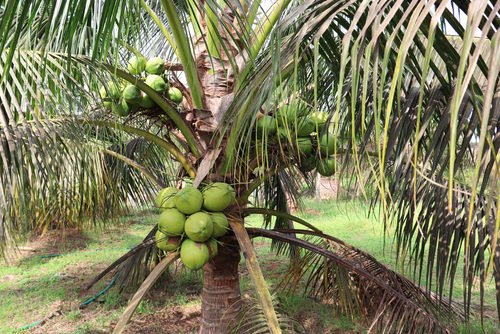
This palm tree yields around 60-70 coconuts per palm and begins fruiting in 3-4 years. Its drupes are dark green and resistant to root wilt disease.
7. Malayan Yellow Dwarf Coconut

This palm has a yield of 50-60 coconuts on each palm per year and starts bearing fruits after 3-4 years. It is native to Indonesia and is resistant to lethal yellowing disease.
8. Fiji Dwarf Coconut
This tropical ornamental tree is popular for its long fronds and a swollen trunk base. Its unique leaf arrangement makes it different from others and has a large bulb at its lower stem. Thanks to its durable nature, it has earned the name- Tough nut.
9. King Coconut
This variety produces orange-skinned coconuts, due to the Carotenoids compound, which is found in orange nuts as well, in clusters of 15-25. It is rich in vitamins, calcium, and amino acids. Its orange husk is
10. VHC1 Coconut
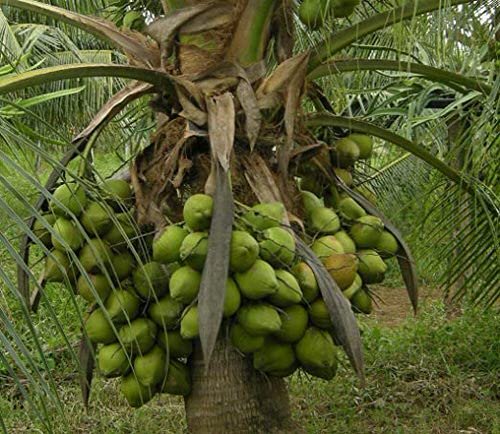
Hybrid of East coast tall and Malayan green dwarf, this hybrid tree starts producing fruits after 4-years and produces around 80-100 coconuts per palm each year.
11. Macapuno Coconut
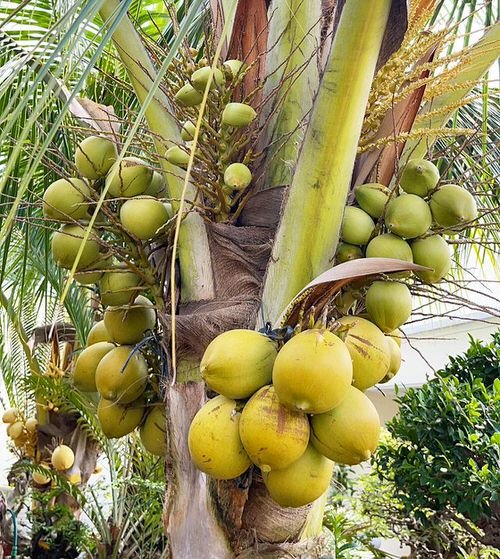
It is a dwarf plant, producing coconuts with a jelly-like flesh of sweet and nutty flavor, used in preparing beverages and desserts like pastries.


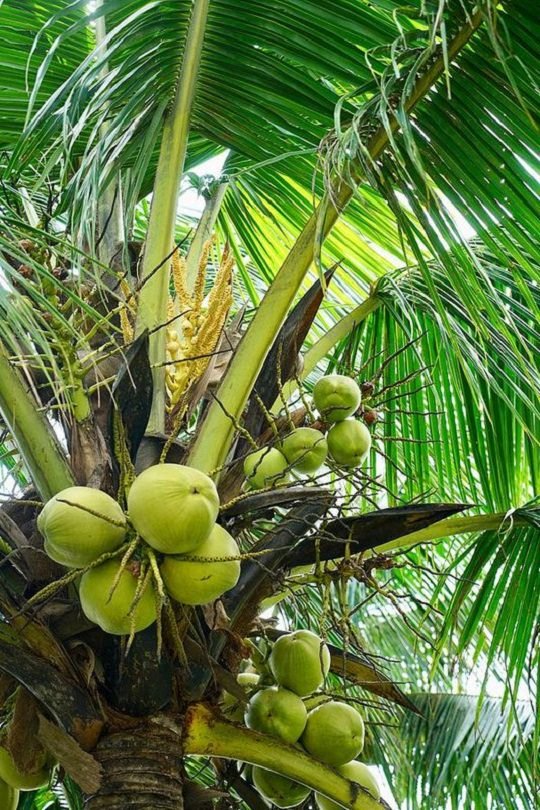

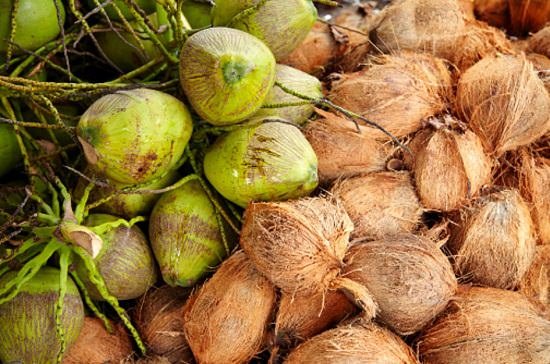
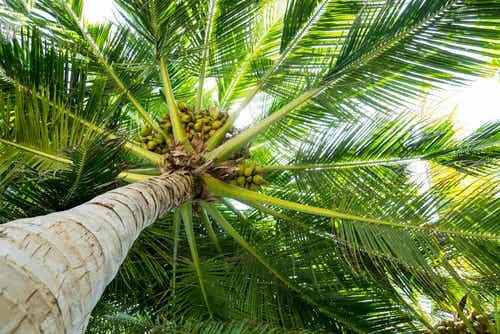
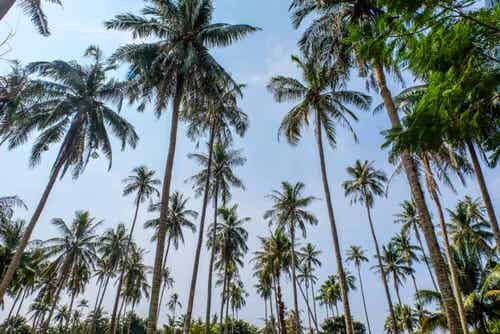
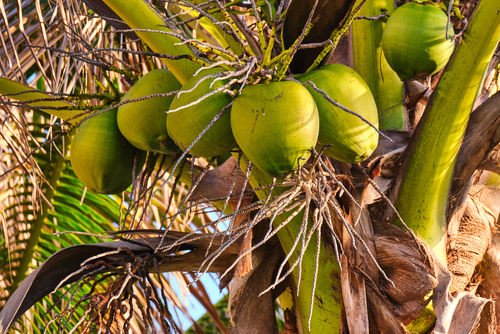
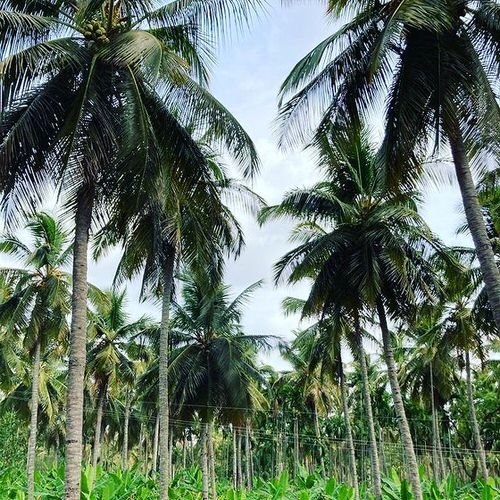
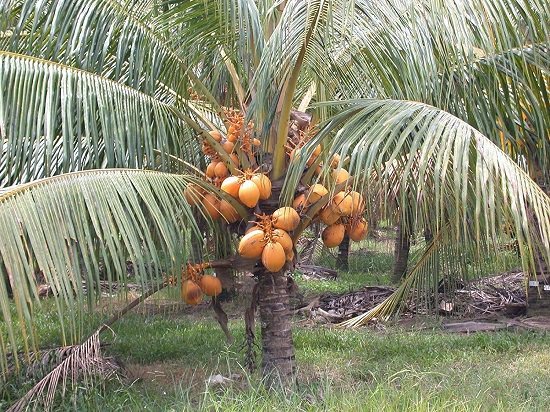

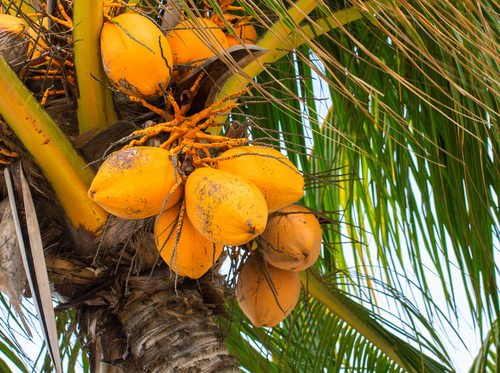


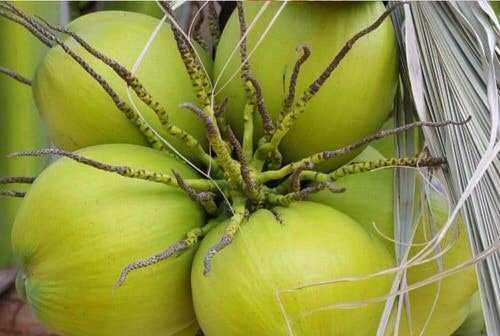

We want to cultivate commercially coconut with beetlenut at the area of Ramnagar as coastal belt which is in the district of east Midnapur in westbengal. Please. advice the productive variety and availablity.
Don’t. Betel nut -as it’s spelt correctly- is gross and lame.
Hi I live in Ghana in west africa my wife and i are planning toenter commercial cocoanut farm and looking for the best variety with lower maturity period any idea on which type considering where we located . Shalom
Try To Look for the Tacunan Dwarf Coconut it bears Fruit in 2-3 years it is Good for Copra Eathing Fresh with Sweet coconut water And Also Produce lots Of Cocunoy sap Good for Making Coco sugar
It’s Is Widely use in the Philippines the Second Largest Coconut Production.
Please I want to learn more about this specie from you sir. This is my watssap number +2348032365454
Please I need a reference of this article
C
Please I need help, which type of coconut is best for producing coconut oil
Most all ripe dried thick meaty coconuts produce coconut oil. Shred the meat. Set the shredded meat in a pot of to water to a boil, as the oil will settle on top of the boiling water. Scoop the oil with a spoon settled on top of the water. You got your coconut oil.
Any one knows about colombus variety of coconut tree?
what type of coconut is best for coconut milk
Please which of the Coconut Specie That Produce more Oil?